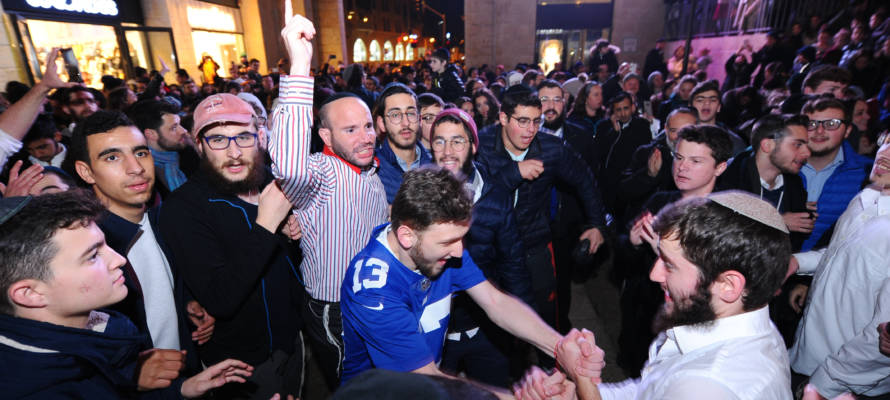In this article we will explore some of the history and meaning of Maoz Tzur, the most famous Chanukah song.
By Rabbi Ari Enkin, Rabbinic Director, United with Israel
The most famous Chanukah hymn is no doubt Maoz Tzur, which is sung in virtually every Jewish home around the world immediately after lighting the Chanukah menorah each night. Although a famous song, its origins are quite mysterious.
The song begins with the words, and is also named, “Maoz Tzur” in commemoration of the city Beit Tzur, which was a Hasmonean stronghold located south of Hebron. (Hasmonean is essentially a synonym for the Maccabees, the military heroes of the Chanukah story).
The Maccabean victory at Beit Tzur significantly helped the Maccabees conquer Jerusalem immediately thereafter.
Others say the word “tzur” (“rock”) is a reference to God. According to this approach, Maoz Tzur essentially means “God is [the rock of] my salvation.”
Maoz Tzur was likely written in the 13th century. It was originally a song reserved for the home, but in the last 200 years or so, it is also sung after the menorah lighting in the synagogue.
The original Maoz Tzur has only five stanzas. The sixth stanza, universal today, was added in the early 16th century by an anonymous author.
It is believed that the authors of the first five stanzas of Maoz Tzur was a rabbi named Mordechai, as the first letters of the first five stanzas together form the word “Mordechai.” It has always been common in Jewish compositions for authors of poems and prayers to hint about their names in this manner.
There are also versions of Maoz Tzur with more than six stanzas as well as versions with variations for each of the six familiar stanzas. Both such types of Maoz Tzur, however, are not currently in use.
The five primary stanzas of Maoz Tzur commemorate our deliverance and survival from four ancient enemies: Pharaoh (Passover), Nebuchadnezzar (related to Tisha b’Av), Haman (Purim) and Antiochus (Chanukah).
Interestingly, the first and last stanzas are written in the present tense. The former expresses our hope for the rebuilding of the Temple and for the downfall of all the enemies of the Jewish People.
The sixth stanza is about hope that God will continue to protect the Jews and usher in the Messianic era. To this end, the first letters of the opening words of the final stanza form the word “hazak,” meaning “strong.”
The universal tune to which Maoz Tzur is sung is both uplifting and somewhat haunting at the same time.
There are many theories as to where the tune originated from, with most sources insisting that it was adapted from the non-Jewish world, likely an old German folk song dating to the mid-15th century.
Bring Joy to Israeli Soldiers - Send Winter Care Packages!
We are honored to thank the young men and women of the IDF who risk their lives every day to defend the citizens of Israel.
Join us in sending winter care packages and personal notes of support to Israeli soldiers who are out in the cold all day.
Warm up a soldier's heart with essential winter wear including fleece jackets, hats, gloves and more. Keep an entire unit warm!
THE SOLDIERS REALLY APPRECIATE YOUR LOVE AND CONCERN!
Click Here to Send Your Gift and Personal Note to Israeli Soldiers
Do You Love Israel? Make a Donation - Show Your Support!
Donate to vital charities that help protect Israeli citizens and inspire millions around the world to support Israel too!
Now more than ever, Israel needs your help to fight and win the war -- including on the battlefield of public opinion.
Antisemitism, anti-Israel bias and boycotts are out of control. Israel's enemies are inciting terror and violence against innocent Israelis and Jews around the world. Help us fight back!




